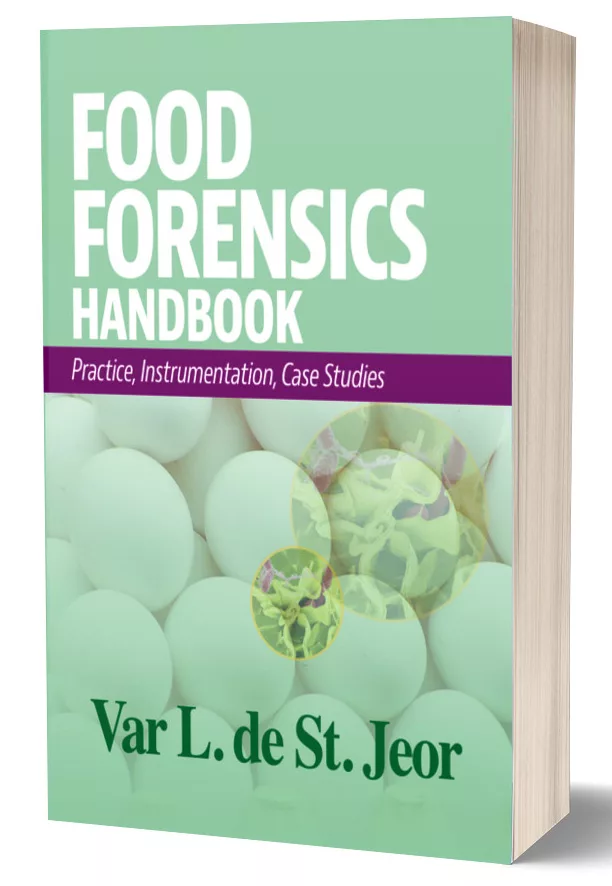USDA Study: Meal Preparation Experiment on Raw Stuffed Chicken Breasts

The U.S. Department of Agriculture Food Safety and Inspection Service (USDA FSIS) has released survey findings based on the third iteration of a five-year annual study.
Meal Preparation Experiment Related to Not-Ready-to-Eat (NRTE) Frozen Foods (Observational Study)
The third iteration of FSIS’ meal preparation observational studies examined participants’ use of a food thermometer to check the doneness of raw stuffed chicken breasts prepared from frozen and also examined the effectiveness of a related educational intervention about the importance of using a food thermometer to check the doneness of NRTE frozen foods.
USDA FSIS contracted with RTI International and its subcontractor, North Carolina State University (NCSU), to conduct meal preparation studies to evaluate consumer food handling behaviors in a test kitchen. The research team is conducting five separate iterations of the meal preparation study. Each iteration addresses a specific consumer behavior and assesses the effectiveness of a related behavior change intervention. The meal preparation studies are part of a larger 5-year annual study that also includes focus groups (two iterations) and web surveys (two iterations). This report describes the results of the third iteration of the meal preparation study that examined participants’ use of a food thermometer to check the doneness of raw stuffed chicken breasts prepared from a frozen state and also examined the effectiveness of a related educational intervention about the importance of using a food thermometer to check the doneness of not-ready-to-eat (NRTE) frozen foods. NRTE foods are foods that have not been fully cooked during processing and require cooking by the consumer for safety. USDA requires these foods have a label deeming them as not fully cooked and that cooking is required to ensure safety. However, these foods may appear to be fully cooked, causing some consumers not to cook before consuming and resulting in foodborne illness.
RTI and NCSU conducted the study in a test kitchen facility located in Raleigh, NC, from April 29, 2019 to September 5, 2019. Before preparing the meal, participants were told the study was behind schedule and were asked to stay in the waiting area for 10 minutes. During this time, a series of news stories was played on a continuous loop on a monitor. For the treatment group, the loop included a 1:47-minute segment about safely preparing frozen NRTE foods. The food safety news segment communicated that although frozen NRTE foods may appear ready to eat, they are not fully cooked, and the endpoint temperature should be checked with a food thermometer to ensure safety. The series of news stories for the control group was similar, but omitted the food safety segment. Thus, the purpose of this experimental intervention was to evaluate the potential impact of proactive media placements USDA achieves throughout the year during seasonal outreach. These segments are usually presented to the public in the middle of newscasts and when people are preoccupied with other tasks.
In each of three identical test kitchens, eight cameras recorded participants preparing the meal from beginning to end. Participants were observed while cooking NRTE frozen, breaded stuffed chicken breasts, and preparing a salad made from NRTE frozen corn, canned black beans, and fresh produce. The main outcome variables were (1) whether participants used a food thermometer to determine when the NRTE products were done; and (2) whether participants adhered to other recommended food safety practices throughout the meal preparation. Participants participated in a post-observation interview to collect information on their usual food preparation practices. A total of 403 people participated in the study (197 control, 206 treatment).
Key Findings
- The rate of thermometer use was high among both the control (77 percent) and treatment (88 percent) groups. Among participants using a thermometer, most checked the temperature of both chicken breasts.
- Nearly all participants reported reading instructions on the package before preparing the product; the package displayed validated cooking instructions provided by the manufacturer that instructed consumers to use a thermometer to check for doneness.
- About 70 percent of participants did not have experience preparing stuffed chicken breasts from a frozen state, which may have led some participants to read the manufacturer’s cooking instructions.
- In the post-observation interviews, among thermometer owners, nearly half of participants said they do not typically use a thermometer when cooking NRTE chicken products at home; thus, for some participants, their behavior in the test kitchen differed from their typical practices.
- The most common method to prepare the frozen NRTE corn for the corn and black bean salad was stovetop (58 percent), followed by microwave (38 percent). Three percent of participants did not cook the corn.
- Participants reported relying on time (37 percent) and visual indicators such as steam (31 percent) to determine the doneness of the corn.
- Few participants used a food thermometer to check the doneness of the corn (1 percent control, 3 percent treatment). o
- Consistent with Years 1 and 2, handwashing compliance was low.
- About 72 percent of participants attempted to wash their hands before beginning meal preparation. Among handwashing attempts, 5 percent of attempts contained all steps of correct handwashing and were considered successful according to the Centers for Disease Control and Prevention’s (CDC) criteria.
- During meal preparation, handwashing was attempted only 5 percent of the time that it was required (e.g., after touching the NRTE chicken product). There were no successful attempts that followed the CDC criteria.
- The most common reason for unsuccessful handwashing attempts was not rubbing hands with soap for 20 seconds.
The results of this study suggest that the food safety segment on safe cooking of frozen NRTE products played as part of a series of news stories shown in the waiting room did not significantly affect thermometer use.
- About 40 percent of the treatment group participants recalled the food safety news segment; thus, not all participants received exposure, which is not surprising given the more passive nature of the intervention.
- Among participants who recalled the food safety news segment, about half said it influenced their actions in the kitchen in that they used a thermometer to check the doneness of the NRTE chicken product, which may have served to reinforce what they read on the product packaging. Thus, exposure to the news segment may have led to the slightly higher rate of thermometer use among the treatment group compared with the control group, although the difference between the two groups was not statistically significant.
See the entire 81-page final report at FSIS.USDA.gov.
Looking for quick answers on food safety topics?
Try Ask FSM, our new smart AI search tool.
Ask FSM →








